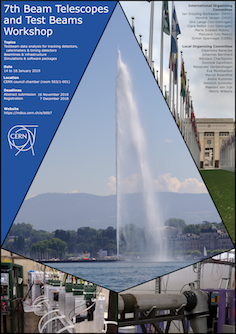Speaker
Description
The upgrade of the LHC to the High-Luminosity LHC (HL-LHC) is expected to increase the current instantaneous luminosity by a factor of 5 to 7. The resulting large integrated luminosity will provide a great opportunity to search for rare processes. To cope with the increase in particle density CMS will build new silicon tracking devices with higher granularity to reduce occupancy, improved radiation hardness and the capability to contribute to the CMS Level-1 Trigger. During the R&D period, tests performed under beam are a very powerful way to develop and examine the behavior of silicon sensors in real conditions. In order to test the CMS Tracker module under a high particle rate, a new beam line is being constructed at IPHC-Strasbourg. This beam line would be added to the existing cyclotron CYRCÉ, that provides proton beams of 25 MeV with intensities up to 100 nA (~$6\cdot10^{11}$ particles per second) and will make it possible to synchronize the 40 MHz clock of the electronics to the particle arrival. In this presentation, the beam line characteristics and design are described along with a Geant4 simulation that estimates the response of a DUT with a geometrical arrangement similar to a CMS 2S module (with respect to energy loss, cluster multiplicity and spatial resolution) with the help of a simplified version of a new particle telescope made of CMS pixel Phase-1 sensors.




